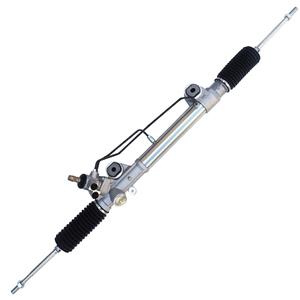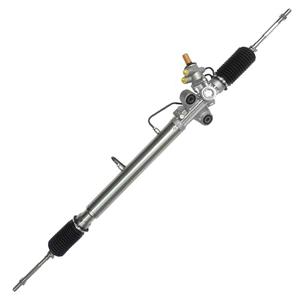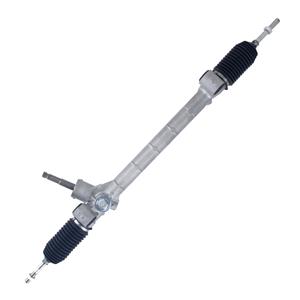Do all vehicles have racks and pinions? In which year did they become popular?
Rack and pinion steering system is one of the most common steering systems in modern cars. It provides a precise and easy control experience by converting the rotational motion of the steering wheel into the left and right steering of the wheels. However, rack and pinion is not a standard steering system for all vehicles, nor has it always been a mainstream design in the automotive industry.
This article will explore which vehicles are equipped with rack and pinion systems and analyze their popularization process and historical background.
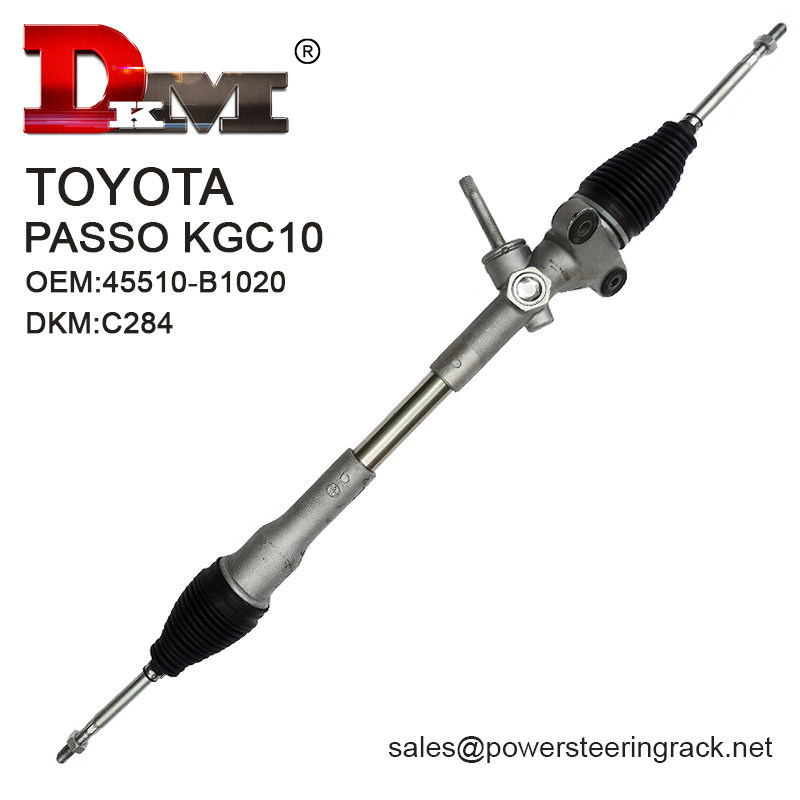
How does rack and pinion work?
Before we go into detail, let's first understand the basic working principle of rack and pinion. The rack and pinion system consists of two main components: the pinion and the rack. The pinion is connected to the steering wheel shaft, and when the driver turns the steering wheel, the pinion also turns. The rotational motion of the pinion drives the meshing rack to move linearly, and this linear motion is transmitted to the wheel through the tie rod and ball head, ultimately realizing the steering of the wheel.
The advantages of this system are its simple structure, quick response, low manufacturing cost, and ability to provide relatively precise steering control. Therefore, since its invention, rack and pinion systems have gradually become the preferred steering system for many cars, light trucks, and some SUVs.
What are the differences between steering systems of different vehicle types?
Although rack and pinion systems occupy an important position in modern cars, not all vehicles use this design. Different types of vehicles are equipped with different steering systems according to their design requirements and uses. Here are some common vehicle types and their corresponding steering systems:
Cars and light trucks
The vast majority of modern cars and light trucks use rack and pinion systems. The design goals of these vehicles are to provide a comfortable driving experience, good handling, and low production costs. Rack and pinion systems are ideal for cars and light trucks because of their compact structure and excellent steering precision.
Heavy trucks and commercial vehicles
For heavy trucks, commercial vehicles, and large SUVs, these vehicles usually require stronger steering force due to their large size and heavy weight. To meet this demand, many heavy vehicles use a recirculating ball steering system. Recirculating ball systems can handle greater loads and are better at providing steering assistance than rack and pinion systems.
Sports and racing cars
Rack and pinion systems are also widely used in high-performance sports and racing cars. These vehicles focus on steering precision and responsiveness, and rack and pinion systems are ideal for sports vehicles because of their direct, agile handling. However, some racing cars may use more specialized custom steering systems to further improve handling and reduce weight.
Vintage and classic cars
Before the mid-20th century, many vehicles were not equipped with rack and pinion systems. At that time, the most common steering system was the recirculating ball steering system, which was suitable for the vehicle designs of the time and provided sufficient steering force. It was not until the 1960s that rack and pinion systems began to replace traditional steering systems as vehicle designs modernized and steering performance requirements increased.
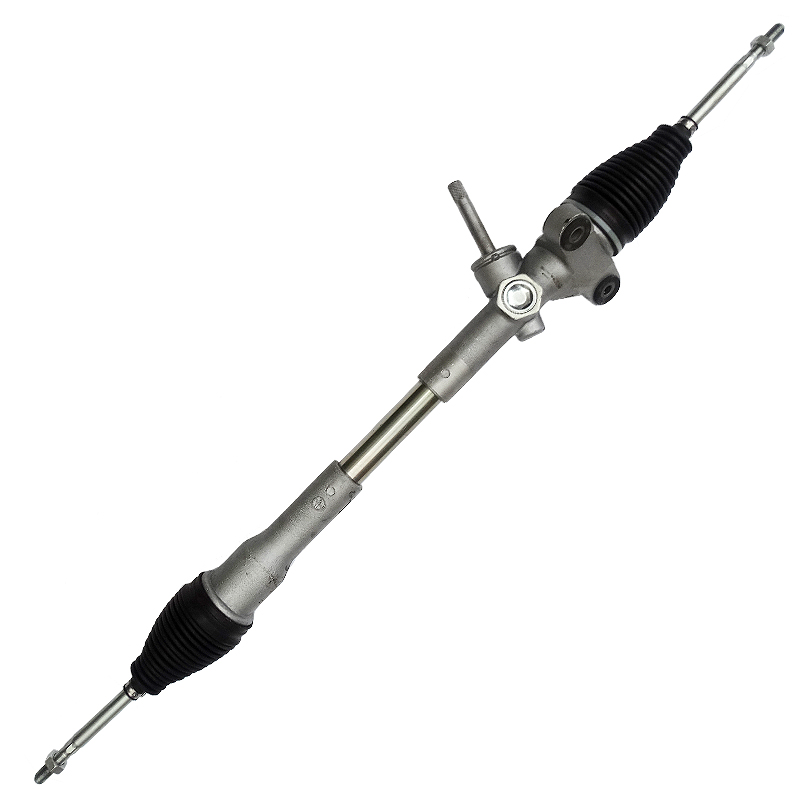
When did rack and pinion become popular?
Origins and early developments
Rack and pinion steering systems can be traced back to the 1930s. In 1932, British car manufacturer Aston Martin first applied the rack and pinion system to its racing models. This design performed well in the racing field at that time, especially in terms of steering accuracy and sensitivity. However, due to the manufacturing process and material limitations at that time, this steering system was not immediately popularized.
In the late 1940s, with the advancement of manufacturing technology and the development of materials science, the rack and pinion system gradually matured and began to be used in high-end cars in Europe. At this time, European automakers gradually realized the advantages of this system in improving vehicle handling.
Popularization in the 1960s
The large-scale popularization of rack and pinion systems began in the 1960s. In the early 1960s, with the rapid development of the automobile market in the United States and Europe, consumers put forward higher requirements for the handling performance of cars. In order to meet market demand, more and more automakers began to adopt rack and pinion systems on small and medium-sized cars. For example, classic models such as the Ford Mustang released in 1965 and the Dodge Dart in 1966 are equipped with this steering system.
The popularity of this steering system did not happen overnight. In the early days, rack and pinion systems were mainly used in light cars and sports cars because these vehicles required more sensitive and precise steering feedback. Compared with the recirculating ball steering system that was commonly used at the time, rack and pinion systems had a simpler structure, lighter weight, and lower cost, which made it quickly popular in small and medium-sized vehicles.
Global Application in the 1980s
By the 1980s, rack and pinion systems had become one of the mainstream steering systems in the global automotive industry. With the rise of Japanese automakers, this system became more popular in economy cars and family cars. Japanese manufacturers such as Toyota and Honda widely adopted rack and pinion systems in their mass-produced models, which led to the rapid spread of this technology around the world.
At the same time, European and American automakers also began to apply this system to more models, including luxury cars and some light trucks. With the introduction of hydraulic power-assist technology, rack and pinion systems can provide an easier steering experience while maintaining a compact structure and cost advantages, further expanding its scope of application.
Widespread Use in Modern Automobiles
In the 21st century, rack and pinion systems have been used in almost all types of light vehicles, including sedans, SUVs, crossovers, etc. Although other types of steering systems are still used in heavy trucks and some high-end luxury cars, rack and pinion systems have become standard configurations for ordinary passenger cars.
In addition, with the rise of Electric Power Steering (EPS), rack and pinion systems have ushered in new development opportunities. The introduction of electric power steering technology has enabled rack and pinion systems to not only maintain their original mechanical advantages, but also greatly improve energy efficiency and handling performance, further consolidating their position in the automotive industry.
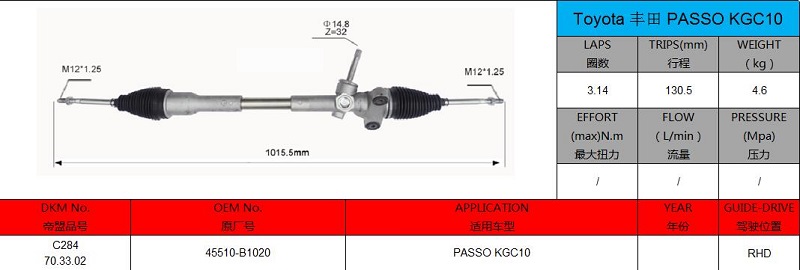
Summary
Rack and pinion systems have played an important role in automotive history. From their initial use in racing cars, to their gradual popularization in the 1960s, to becoming standard configurations on almost all light vehicles today, the development of this system reflects the evolution of the automotive industry driven by technological progress and market demand. Although not all vehicles use rack and pinion systems, they undoubtedly dominate modern cars.
Understanding the historical background and technical characteristics of this system will help us better understand the design concepts and technical choices of modern automobiles.


